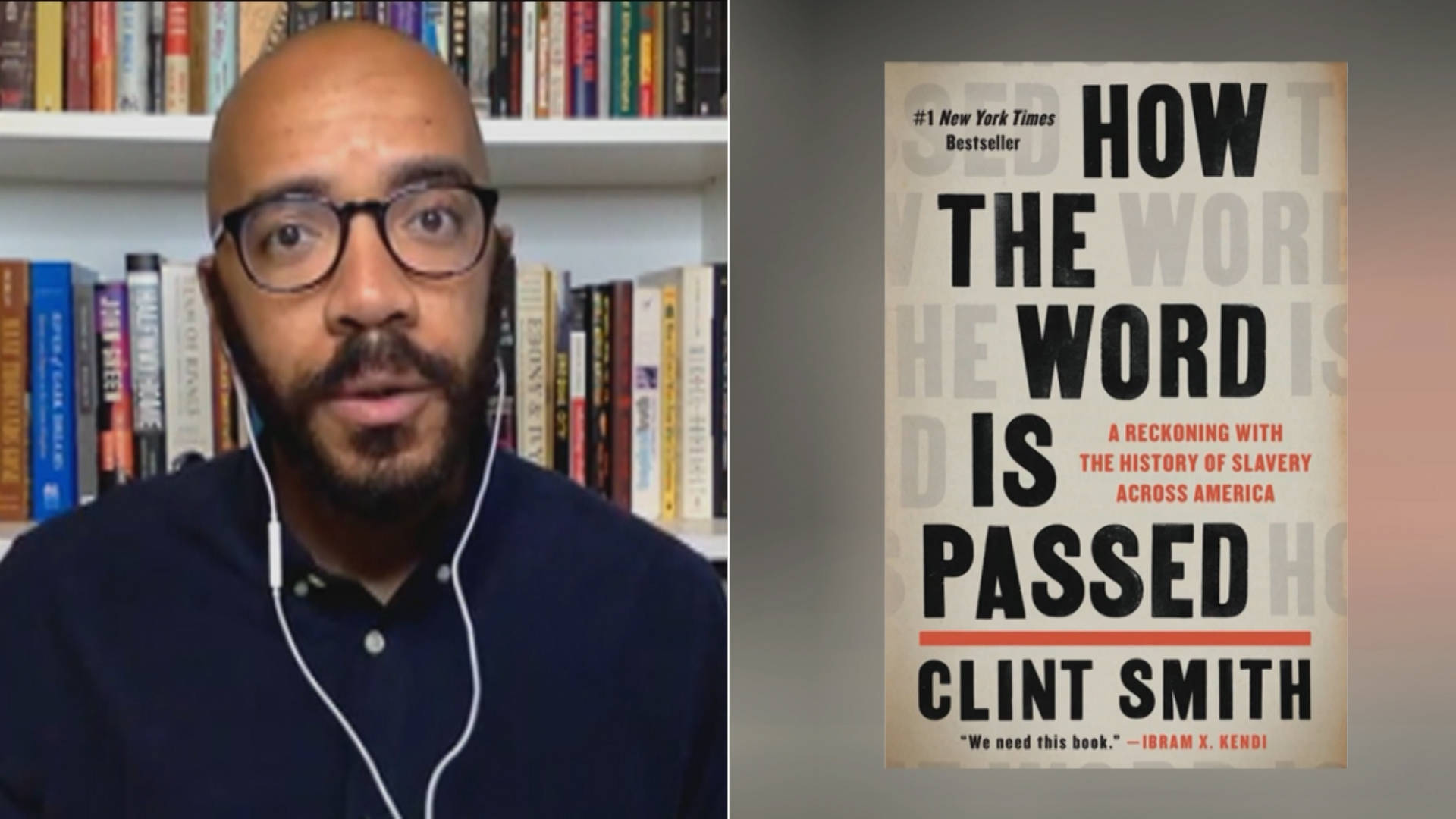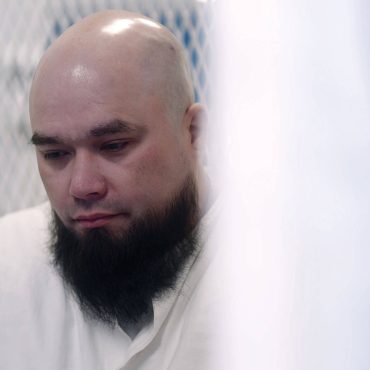This is a rush transcript. Copy may not be in its final form.
AMY GOODMAN: Today, a Democracy Now! special on this, the newly created Juneteenth federal holiday, which marks the end of slavery in the United States. The Juneteenth commemoration dates back to the last days of the Civil War, when Union soldiers landed in Galveston, Texas — it was June 19th, 1865 — with news that the war had ended, and enslaved people learned they were freed. It was two-and-a-half years after President Lincoln signed the Emancipation Proclamation.
In 2021, President Biden signed legislation to make Juneteenth the first new federal holiday since Dr. Martin Luther King Jr. Day. The day after Biden signed the legislation, I spoke to the writer and poet Clint Smith, author of How the Word Is Passed: A Reckoning with the History of Slavery Across America. I began by asking him about traveling to Galveston, Texas, and his feelings on Juneeteenth becoming a federal holiday.
CLINT SMITH: As you mentioned, I went to Galveston, Texas. I’ve been writing this book for four years, and I went two years ago. And it was marking the 40th anniversary of when Texas had made Juneteenth a state holiday. And it was the Al Edwards Prayer Breakfast. The late Al Edwards Sr. is the state legislator, Black state legislator, who made possible and advocated for the legislation that turned Juneteenth into a holiday, a state holiday in Texas.
And so I went, in part, because I wanted to spend time with people who were the actual descendants of those who had been freed by General Gordon Granger’s General Order No. 3. And it was a really remarkable moment, because I was in this place, on this island, on this land, with people for whom Juneteenth was not an abstraction. It was not a performance. It was not merely a symbol. It was part of their tradition. It was part of their lineage. It was an heirloom that had been passed down, that had made their lives possible. And so, I think I gained a more intimate sense of what that holiday meant.
And to sort of broaden, broaden out more generally, you spoke to how it was more than two-and-a-half years after the Emancipation Proclamation, and it was an additional two months after General Robert E. Lee surrendered at Appomattox, effectively ending the Civil War. So it wasn’t only two years after the Emancipation Proclamation; it was an additional two months after the Civil War was effectively over.
And so, for me, when I think of Juneteenth, part of what I think about is the both/andedness of it, that it is this moment in which we mourn the fact that freedom was kept from hundreds of thousands of enslaved people for years and for months after it had been attained by them, and then, at the same time, celebrating the end of one of the most egregious things that this country has ever done.
And I think what we’re experiencing right now is a sort of marathon of cognitive dissonance, in the way that is reflective of the Black experience as a whole, because we are in a moment where we have the first new federal holiday in over 40 years and a moment that is important to celebrate, the Juneteenth, and to celebrate the end of slavery and to have it recognized as a national holiday, and at the same time that that is happening, we have a state-sanctioned effort across state legislatures across the country that is attempting to prevent teachers from teaching the very thing that helps young people understand the context from which Juneteenth emerges.
And so, I think that we recognize that, as a symbol, Juneteenth is not — that it matters, that it is important, but it is clearly not enough. And I think the fact that Juneteenth has happened is reflective of a shift in our public consciousness, but also of the work that Black Texans and Black people across this country have done for decades to make this moment possible.
AMY GOODMAN: And can you explain more what happened in Galveston in 1865 and, even as you point out, what the Emancipation Proclamation actually did two-and-a-half years before?
CLINT SMITH: Right. So, the Emancipation Proclamation is often a widely misunderstood document. So, it did not, sort of wholesale, free the enslaved people throughout the Union. It did not free enslaved people in the Union. In fact, there were several border states that were part of the Union that continued to keep their enslaved laborers, states like Kentucky, states like Delaware, states like Missouri. And what it did was it was a military edict that was attempting to free enslaved people in Confederate territory. But the only way that that edict would be enforced is if Union soldiers went and took that territory.
And so, part of what many enslavers realized — and realized correctly — was that Texas would be one of the last frontiers that Union soldiers would be able to come in and force the Emancipation Proclamation — if they ever made it there in the first place, because this was two years prior to the end of the Civil War. And so, you had enslavers from Virginia and from North Carolina and from all of these states in the upper South who brought their enslaved laborers and relocated to Texas, in ways that increased the population of enslaved people in Texas by the tens of thousands.
And so, when Gordon Granger comes to Texas, he is making clear and letting people know that the Emancipation Proclamation had been enacted, in ways that because of the topography of Texas and because of how spread out and rural and far apart from different ecosystems of information many people were, a lot of enslaved people didn’t know that the Emancipation Proclamation had happened. And some didn’t even know that General Lee had surrendered at Appomattox two months prior. And so, part of what this is doing is making clear to the 250,000 enslaved people in Texas that they had actually been granted freedom two-and-a-half years prior and that the war that this was all fought over had ended two months before.
AMY GOODMAN: During the ceremony making Juneteenth a federal holiday, President Biden got down on his knee to greet Opal Lee, the 94-year-old activist known as the Grandmother of Juneteenth. This is Biden speaking about Lee.
PRESIDENT JOE BIDEN: As a child growing up in Texas, she and her family would celebrate Juneteenth. On Juneteenth 1939, when she was 12 years old, a white mob torched her family home. But such hate never stopped her, any more than it stopped the vast majority of you I’m looking at from this podium. Over the course of decades, she has made it her mission to see that this day came. It was almost a singular mission. She has walked for miles and miles, literally and figuratively, to bring attention to Juneteenth, to make this day possible.
AMY GOODMAN: And this is Opal Lee speaking at Harvard School of Public Health.
OPAL LEE: I don’t want people to think Juneteenth is just one day. There is too much educational components. We have too much to do. I even advocate that we do Juneteenth, that we celebrate freedom from the 19th of June to the Fourth of July, because we weren’t free on the Fourth of July, 1776. That would be celebrating freedom — do you understand? — if we were able to do that.
AMY GOODMAN: And that is Opal Lee, considered the Grandmother of Juneteenth. And, Clint, one of the things you do in your book is you introduce us to grassroots activists. This doesn’t come from the top; this comes from years of organizing, as you point out, in Galveston itself and with people like — not that there’s anyone like — Opal Lee.
CLINT SMITH: Yeah, no, absolutely. Part of what this book is doing, it is an attempt to uplift the stories of people who don’t often get the attention that they deserve in how they shape the historical record. So, that means the public historians who work at these historical sites and plantations. That means the museum curators. That means the activists and the organizers, people like Take ’Em Down NOLA in New Orleans, who pushed the City Council and the mayor to make possible the fact that in 2017 these statues would come down, several Confederate statues in my hometown, in New Orleans.
And part of — when I think about someone like Miss Opal Lee, part of what I think about is our proximity to this period of history, right? Slavery existed for 250 years in this country, and it’s only not existed for 150. And, you know, the way that I was taught about slavery, growing up, in elementary school, we were made to feel as if it was something that happened in the Jurassic age, that it was the flint stone, the dinosaurs and slavery, almost as if they all happened at the same time. But the woman who opened the National Museum of African American History and Culture alongside the Obama family in 2016 was the daughter of an enslaved person — not the granddaughter or the great-granddaughter or the great-great-granddaughter. The daughter of an enslaved person is who opened this museum of the Smithsonian in 2016. And so, clearly, for so many people, there are people who are alive today who were raised by, who knew, who were in community with, who loved people who were born into intergenerational chattel bondage. And so, this history that we tell ourselves was a long time ago wasn’t, in fact, that long ago at all.
And part of what so many activists and grassroots public historians and organizers across this country recognize is that if we don’t fully understand and account for this history, that actually wasn’t that long ago, that in the scope of human history was only just yesterday, then we won’t fully understand our contemporary landscape of inequality today. We won’t understand how slavery shaped the political, economic and social infrastructure of this country. And when you have a more acute understanding of how slavery shaped the infrastructure of this country, then you’re able to more effectively look around you and see how the reason one community looks one way and another community looks another way is not because of the people in those communities, but is because of what has been done to those communities, generation after generation after generation. And I think that that is central to the sort of public pedagogy that so many of these activists and organizers who have been attempting to make Juneteenth a holiday and bring attention to it as an entry point to think more wholly and honestly about the legacy of slavery have been doing.
AMY GOODMAN: During an interview on CNN, Democratic Congressmember Alexandria Ocasio-Cortez called out the 14 Republican congressmembers — all white men — who voted against making Juneteenth a federal holiday.
REP. ALEXANDRIA OCASIO–CORTEZ: This is pretty consistent with, I think, the Republican base, and it’s — whether it’s trying to fight against teaching basic history around racism and the role of racism in U.S. history to — you know, there’s a direct through line from that to denying Juneteenth, the day that is widely recognized and celebrated as a symbolic kind of day to represent the end of slavery in the United States.
AMY GOODMAN: If you could respond to that, Clint Smith, and also the fact that on the same day, yesterday, the Senate minority leader said they would not be supporting the For the People Act?
CLINT SMITH: Yeah, I mean, I think —
AMY GOODMAN: The Voting Rights Act.
CLINT SMITH: Absolutely. I think, very clearly, the critical race theory — the idea of it is being used as a bogeyman, and it is being misrepresented and distorted by people who don’t even know what critical race theory is, right? So we should be clear that the thing that people are calling critical race theory is just — that is the language that they are using to talk about the idea of teaching any sort of history that rejects the idea that America is a singularly exceptional place, and that we should not account for the history of harm that has been enacted to create opportunities and intergenerational wealth for millions of people, that has come at the direct expense of millions and millions of other people across generations.
And so, part of what is happening in these state legislatures across the country with regard to the effort to push back against teaching of history — 1619 Project, critical race theory and the like — is a recognition that we have developed in this country a more sophisticated understanding, a more sophisticated framework, a more sophisticated public lexicon, with which to understand how slavery — how racism was not just an interpersonal phenomenon, it was a historic one, it was a structural one, it was a systemic one.
AMY GOODMAN: I want you to talk more about your book, How the Word Is Passed: A Reckoning with the History of Slavery Across America. Can you talk about the journey you took — you were just mentioning where you grew up, in Louisiana, the map of the streets of Louisiana — and why you feel it is so critical not only to look at the South, but your chapter on New York is something that people will be — many will be shocked by, the level of — when people talk about the South and slavery, that New York, of course, had enslaved people?
CLINT SMITH: It did. It was really important for me to include a chapter on New York City, and a place in the North, more broadly, in part because, you know, while the majority of places I visit are in the South, because the South is where slavery was saturated and where it was most intimately tied the social and economic infrastructure of that society, it most certainly also existed in the North.
What a lot of people don’t know is that New York City, for an extended period of time, was the second-largest slave port in the country, after Charleston, South Carolina; that in 1860, on the brink of the Civil War, when South Carolina was about to secede from the Union after the election of Abraham Lincoln, that New York City’s mayor, Fernando Wood, proposed that New York City should also secede from the Union alongside the Southern states, because New York’s financial and political infrastructure were so deeply entangled and tied to the slavocracy of the South; also that the Statue of Liberty was originally conceived by Édouard de Laboulaye, a French abolitionist, who conceived of the idea of the Statue of Liberty and giving it to the United States as a gift, that it was originally conceived as an idea to celebrate the end of the Civil War and to celebrate abolition.
But over time, that meaning has been — even through the conception of the statue, right? The original conception of the statue actually had Lady Liberty breaking shackles, like a pair of broken shackles on her wrists, to symbolize the end of slavery. And over time, it became very clear that that would not have the sort of wide stream — or, wide mainstream support of people across the country, obviously this having been just not too long after the end of the Civil War, so there were still a lot of fresh wounds. And so they shifted the meaning of the statue to be more about sort of inclusivity, more about the American experience, the American project, the American promise, the promise of democracy, and sort of obfuscated the original meaning, to the point where even the design changed. And so they replaced the shackles with a tablet and the torch, and then put the shackles very subtly sort of underneath her robe. And you can — but the only way you can see them, these broken chains, these broken links, are from a helicopter or from an airplane.
And in many ways, I think that that is a microcosm for how we hide the story of slavery across this country, that these chain links are hidden, out of sight, out of view of most people, under the robe of Lady Liberty, and how the story of slavery across this country is very — as we see now, very intentionally trying to be hidden and kept from so many people, so that we have a fundamentally inconsistent understanding of the way that slavery shaped our contemporary society today.
AMY GOODMAN: Clint, before we end, you are an author, you’re a writer, you’re a teacher, and you are a poet. Can you share a poem with us?
CLINT SMITH: I’d be happy to. And so, when you’re a poet writing nonfiction, that very much animates the way that I approach the text. And so, this is part of the — this is an adaptation or an except from the end of one of my chapters, that originally began as a poem that I wrote when I was trying to think about some of these issues that I brought up.
[reading] Growing up, the iconography of the Confederacy was an ever-present fixture of my daily life. Every day on the way to school, I passed a statue of P.G.T. Beauregard riding on horseback, his Confederate uniform slung over his shoulder and his military cap pulled far down over his eyes. As a child, I did not know who P.G.T. Beauregard was. I did not know he was the man who ordered the first attack that opened the Civil War. I did not know he was one of the architects who designed the Confederate battle flag. I did not know he led an army predicated on maintaining the institution of slavery. What I knew is that he looked like so many of the other statues that ornamented the edges of this city, these copper garlands of a past that saw truth as something that should be buried underground and silenced by the soil.
After the war, the sons and daughters of the Confederacy reshaped the contours of treason into something they could name as honorable. We called it the Lost Cause. And it crept its way into textbooks that attempted to cover up a crime that was still unfolding; that told us that Robert E. Lee was an honorable man, guilty of nothing but fighting for the state and the people that he loved; that the Southern flag was about heritage and remembering those slain fighting to preserve their way of life. But, see, the thing about the Lost Cause is that it’s only lost if you’re not actually looking. The thing about heritage is that it’s a word that also means “I’m ignoring what we did to you.”
I was taught the Civil War wasn’t about slavery, but I was never taught how the declarations of Confederate secession had the promise of human bondage carved into its stone. I was taught the war was about economics, but I was never taught that in 1860 the 4 million enslaved Black people were worth more than every bank, factory and railroad combined. I was taught that the Civil War was about states’ rights, but I was never taught how the Fugitive Slave Act could care less about a border and spelled Georgia and Massachusetts the exact same way.
It’s easy to look at a flag and call it heritage when you don’t see the Black bodies buried behind it. It’s easy to look at a statue and call it history when you ignore the laws written in its wake.
I come from a city abounding with statues of white men on pedestals and Black children playing beneath them, where we played trumpets and trombones to drown out the Dixie song that’s still whistled in the wind. In New Orleans, there are over 100 schools, roads and buildings named for Confederates and slaveholders. Every day, Black children walk into buildings named after people who never wanted them to be there. Every time I would return home, I would drive on streets named for those who would have wanted me in chains.
Go straight for two miles on Robert E. Lee, take a left on Jefferson Davis, make the first right on Claiborne. Translation: Go straight for two miles on the general who slaughtered hundreds of Black soldiers who were trying to surrender, take a left on the president of the Confederacy who made the torture of Black bodies the cornerstone of his new nation, make the first right on the man who permitted the heads of rebelling slaves to be put on stakes and spread across the city in order to prevent the others from getting any ideas.
What name is there for this sort of violence? What do you call it when the road you walk on is named for those who imagined you under a noose? What do you call it when the roof over your head is named after people who would have wanted the bricks to crush you?
AMY GOODMAN: Clint Smith, author of the book How the Word Is Passed: A Reckoning with the History of Slavery Across America, speaking on Democracy Now! in 2021, the day after Juneteenth became a federal holiday.
Coming up, the pioneering musical artist Rhiannon Giddens. She won a Pulitzer Prize for her opera Omar, about Omar ibn Said, a Muslim scholar in Africa sold into slavery in the 1800s.











Post comments (0)